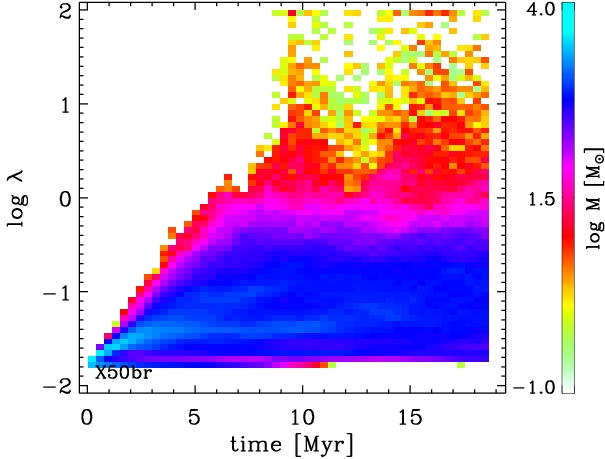| EPoS Contribution |
|
Setting the Star Formation Rate & Efficiency:
Revisiting the Role of Turbulence and Magnetic Fields
Fabian Heitsch Dept. of Physics & Astronomy, UNC Chapel Hill, Chapel Hill, USA | |
| Galactic star formation occurs at a surprisingly low rate. Yet, recent large-scale surveys of dark clouds in the Galaxy show that one rarely finds molecular clouds without young stellar objects. Thus, star formation must occur rapidly upon molecular cloud formation. I will argue that this rapid onset of star formation poses stringent constraints on the physical properties and on the boundary conditions of the parental molecular cloud, which in turn requires a closer study of the cloud formation process. I will discuss a series of numerical experiments on cloud formation, demonstrating that there is no need (and no way) for turbulent support, but that the observed turbulence in molecular clouds is a consequence of global gravitationally driven motions and of the cloud formation process itself. The role of the magnetic field seems to be in parts consistent with a classical picture of support, with the difference that it only plays a role in the diffuse molecular gas, but not in the dense filaments. I will discuss these findings in the context of recent observations. | |
 | |
| Caption: Mass-to-flux ratio against time for a magnetized flow-driven cloud formation model (similar to model Gf2 of Heitsch et al. 2008). The color denotes the gas mass within each bin of lambda. Anything below lambda = 1 is magnetically supported (i.e. the diffuse bulk of the cloud), while only a tiny fraction of the cloud mass (namely the dense cores and filaments) are magnetically supercritical. | |
| Collaborators: Lee W. Hartmann, U of Michigan, USA Javier Ballesteros-Paredes, CRAL-UNAM, Morelia, Mexico |
Key publication
Suggested Session: Herschel, Magnetic Fields, Molecular Clouds, Turbulence |

